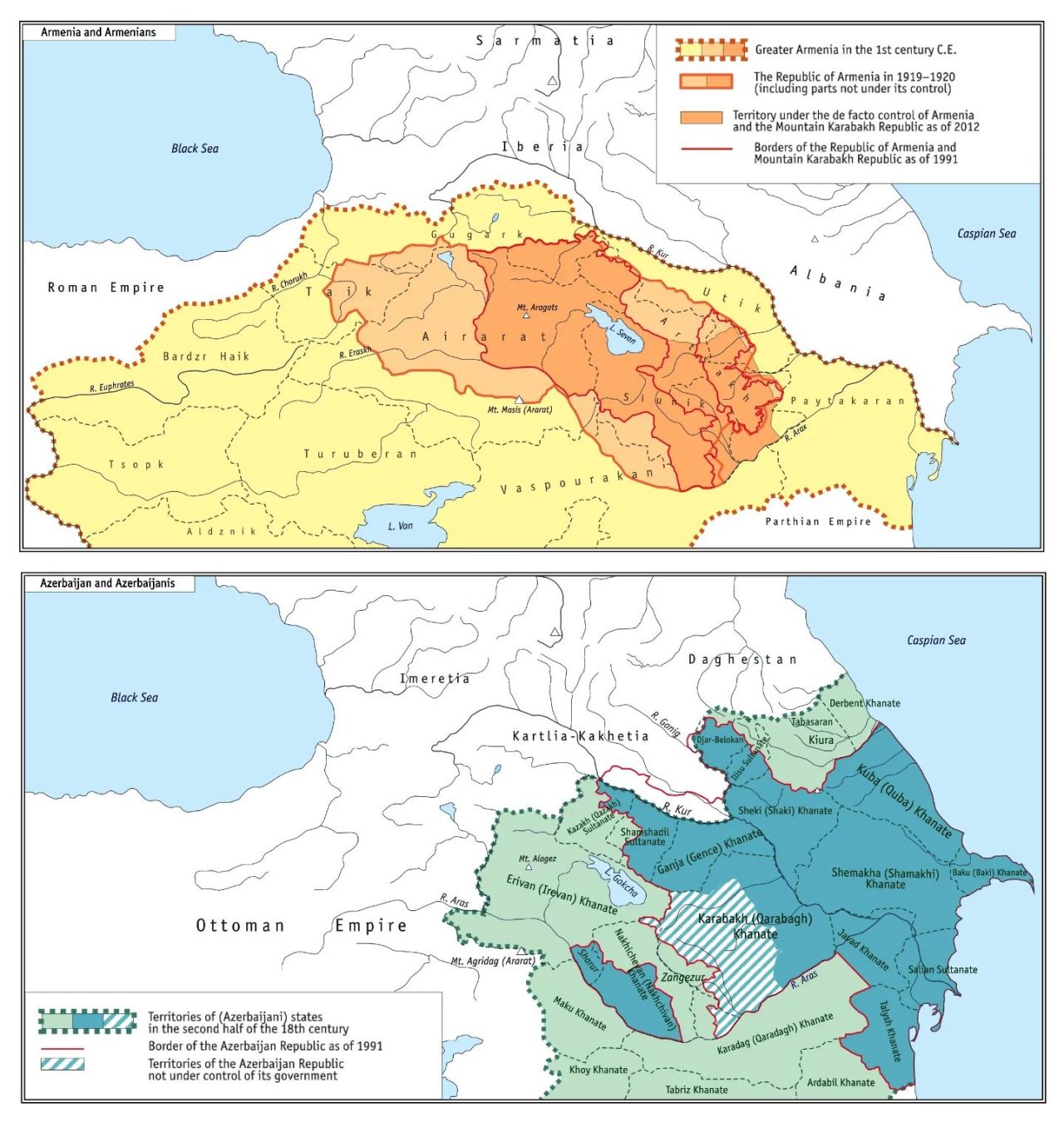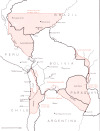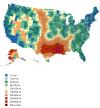
The territorial history of Armenia and Azerbaijan
“Atlas of the Ethno-Political History of the Caucasus”, Arthur Tsutsiev, Yale University Press, 2014
The Armenian historical view centers on the global threat associated with the expansion of Turkic-speaking tribal groups into former Armenian territories, including Artsakh (Karabakh). Today’s Azerbaijan is itself largely the former Caucasian Albania, a land which became Christian in the middle of the 4th century, submerged from the 11th century by Turkish invasions and which, in the 19th century, completely disappeared, transformed into a territory Turkish and Muslim.
Azerbaijan comes from the Democratic Republic of Azerbaijan of 1918-1920, created following Turkish intervention and taking its name from a Persian region located further south. This part of Eastern Transcaucasia, incorporated into Russia between 1803 and 1828, is in fact a former Persian territory with an indigenous sedentary Armenian population and a nomadic Turkish-Kurdish population who arrived later.
After the First World War, the Armenians would not have a state in the former Ottoman territories but a small formerly Russian territory around the city of Yerevan, southwestern part of the Transcaucasian Federative Democratic Republic (April -May 1918) which takes the name of the Democratic Republic of Armenia. From June 1920, the Kemalist Turkish nationalists began negotiations with the Soviets and the demarcation of the borders of the Armenian Soviet Socialist Republic (born December 2) was ultimately to the detriment of the Armenians themselves, since it did not does not include Karabakh, included entirely in Azerbaijan, at the insistent request of the Turks.
From then on, the Armenians are a people who have the particularity of being deprived of a large part of their historical territory even though it dates back to the 9th century BC with the kingdom of Urartu and its territorial peak dates from the end of the 2nd century BC when King Tigranes dominated a territory stretching from the Caspian to the Mediterranean.
![Armenia between 1918 and 1921
Atlas of the Ethno-Political History of the Caucasus, Arthur Tsutsiev, Yale University Press, 2014
by cartesdhistoire
[[MORE]]In May 1918, the republics of Georgia, Azerbaijan and Armenia were created. But the new...](https://64.media.tumblr.com/371ed1bdfc72815371942dad004d06c1/7c368bc4e4f0f1b6-96/s100x200/5c958d7e6eb27d901cd19d8779e91810b4d2a95e.jpg)
![Argentina’s borders
« Atlas des peuples d’Amérique », Jean Sellier, La Découverte, 2006
by cartesdhistoire
[[MORE]]In 1853, Argentina adopted a constitution modeled after that of the United States, which combined federalism with presidential...](https://64.media.tumblr.com/a9f982e4f2b2696cdd5e868ec8da242d/cfe68ece1fb0081e-ec/s100x200/55d7644c4e30d31a6bf838000c4c6a605489eac8.jpg)
![Borders of Bolivia
« Atlas des peuples d’Amérique », Jean Sellier, La Découverte, 2006
by cartesdhistoire
[[MORE]]In the Atacama Desert, which belongs to Bolivia, local rulers (“caudillos”) granted concessions to foreigners. Around 1840–1850,...](https://64.media.tumblr.com/34e3028bbb26005892af8523f7abe069/5ba9a5907c922bfd-9a/s100x200/d91e9999dad25e5d00efc924feaa3ca38286594a.jpg)

![“Nations on the March”, 1941 book showing territorial changes from 1914-1941.
[[MORE]]Gallery of maps](https://64.media.tumblr.com/e2f46f68a7cf8c9a6c8c8e2c721d6d94/tumblr_nq9jmdv5Mf1rasnq9o1_100.jpg)


![Zangezur corridor connects Azerbaijan’s main territory with Turkey through Armenia and the Nakhchivan province.
[[MORE]] There is a strategic route, which lies across what Azerbaijanis called Zangezur corridor, connecting Azerbaijan’s main territory...](https://64.media.tumblr.com/0bd0931df696cf3387a4af823c1afb82/a651367d55b79266-10/s100x200/140854e5488d049ec03c5e829266eba63b1e43a0.jpg)
![De facto Territorial Losses of Eastern Armenia (1920 to 2020).
[[MORE]]by u/Nunuxx
“ The overlayed yellow borders are the contemporary de jure internationally recognised borders and the unrecognised Republic of Artsakh compared to the de facto...](https://64.media.tumblr.com/32ba0da989170333df63ce7cbb7809f4/c87e332ca27bb539-25/s100x200/3e38430dd208c6ecddc005dd4815d5b0d47641d4.png)




















